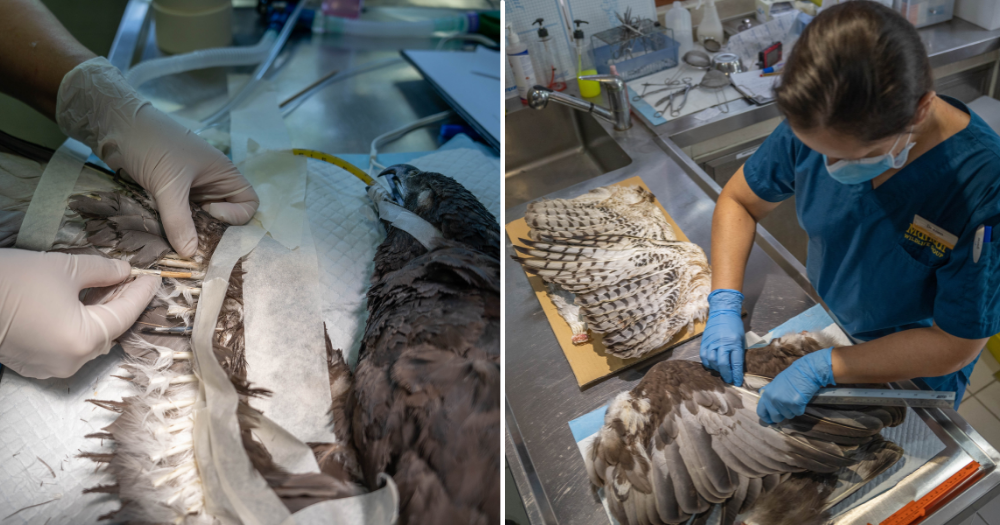Follow us on Telegram for the latest updates: https://t.me/mothershipsg
An injured Changeable hawk-eagle was rescued by the National Parks Board (NParks) from Jurong Island on Jan. 7 after a tip-off from a member of the public.
The native raptor had burnt feathers on its tail and wings, which rendered it unable to fly.Brought to Jurong Bird Park
Veterinarians at the Jurong Bird Park's avian hospital assessed that it was in good health, notwithstanding its damaged feathers.
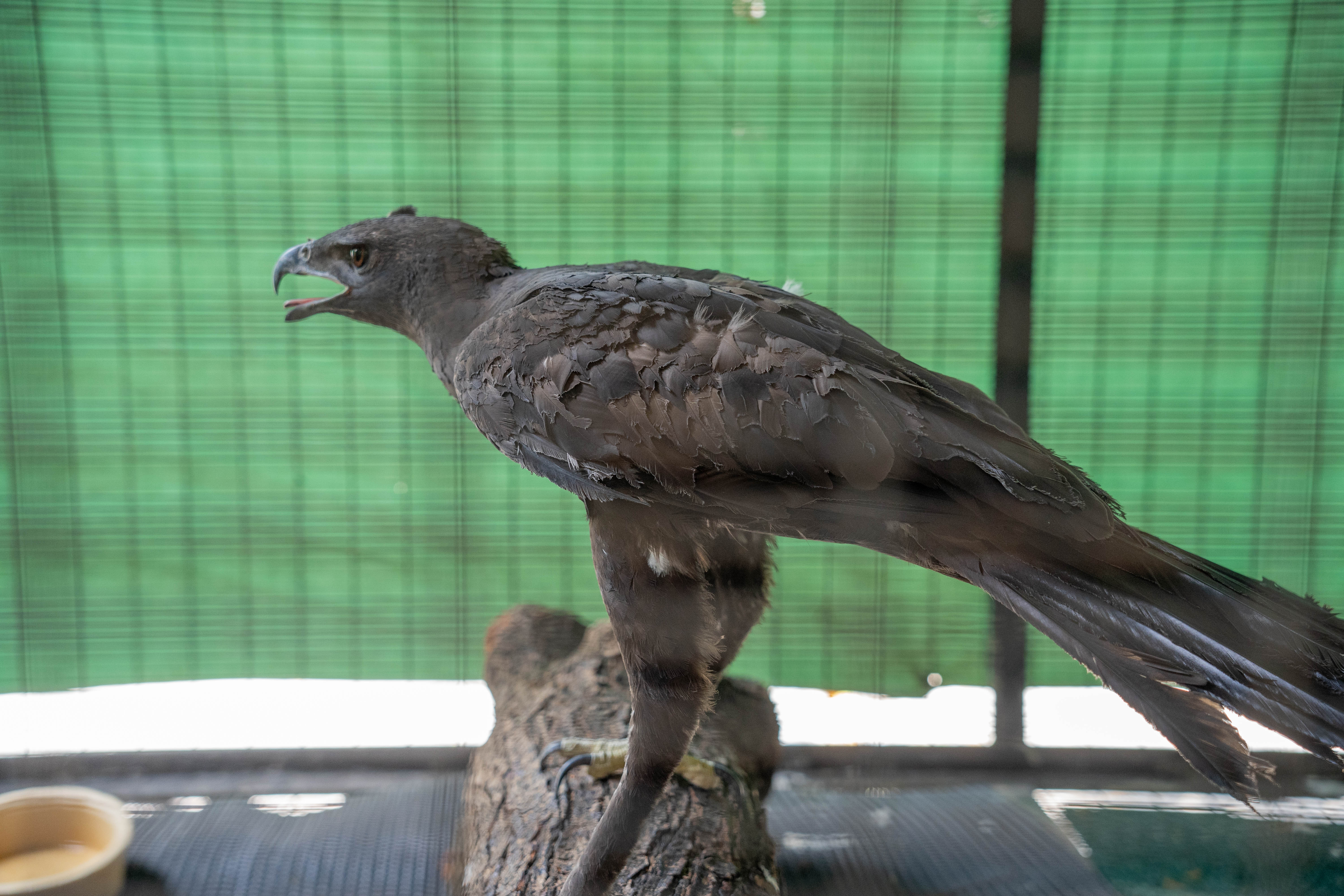 Image by Jurong Bird Park.
Image by Jurong Bird Park.
While birds will naturally grow new feathers during their moulting cycle, the regrowing process could take up to 12 months before the eagle would be able to fly again.
It would not also be safe for the bird to be released into the wild without sufficient feather coverage even though it was otherwise healthy, said Ellen Rasidi, a veterinarian at Jurong Bird Park.
This is because feathers are also important for the bird to regulate body temperature, act as camouflage and protect them from water.
Instead, the veterinary team decided to imp its wings and tail feathers on Jan. 20 after receiving suitable donor wings, so it could quickly return into the wild.
Feather implants
Imping refers to the process of replacing damaged feathers with similar feathers, preferably from a donor of the same species.
It is believed that the intricate technique is centuries old, with roots in the ancient practice of falconry.
The procedure involves joining what remains of the old and damaged feather to a new replacement feather by inserting a thin piece of bamboo or other material known as an imping needle into the shaft of both feathers and securing it with some adhesive.
In this case, bamboo chopsticks were used as imping needles to affix the new feathers.
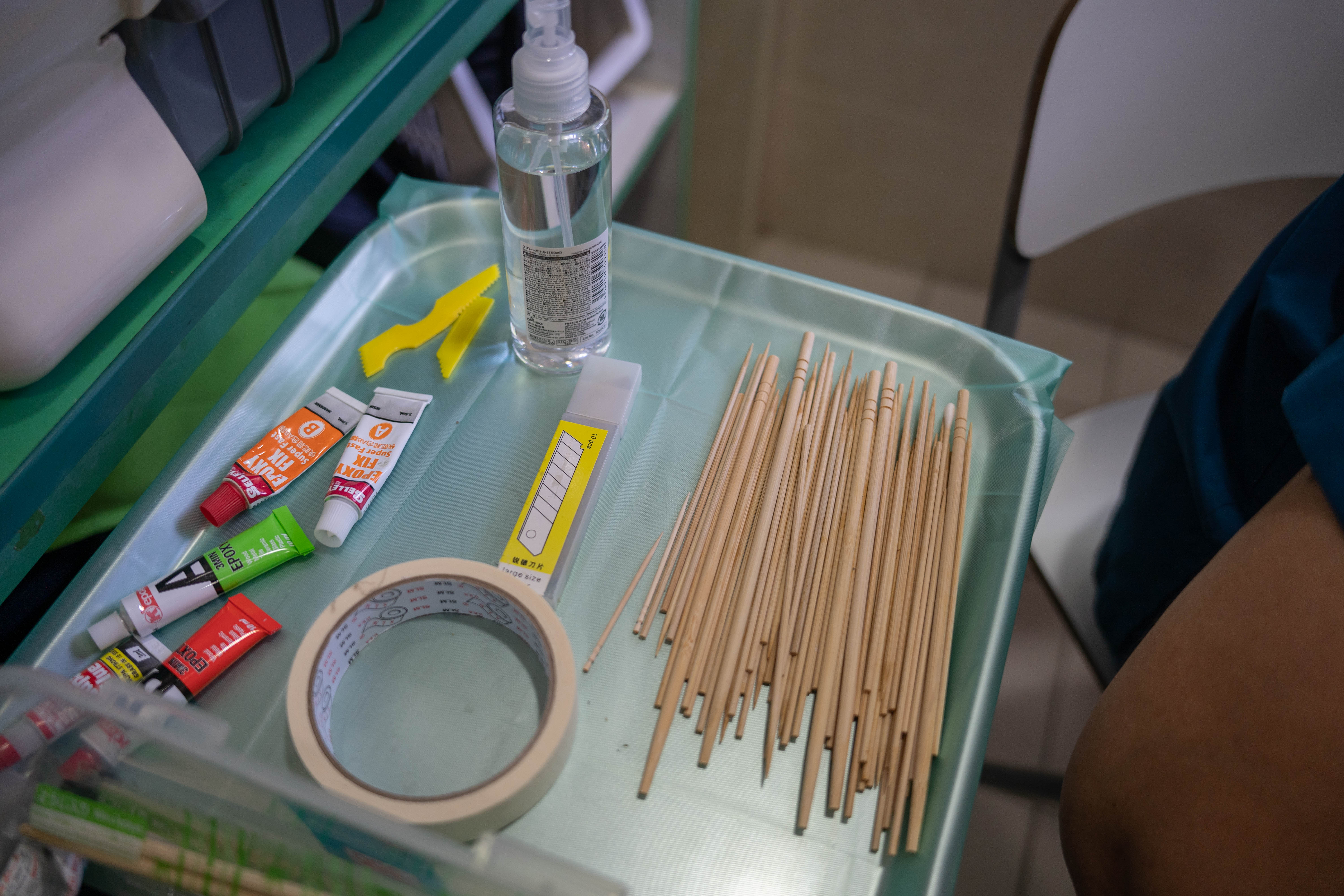 Image by Jurong Bird Park.
Image by Jurong Bird Park.
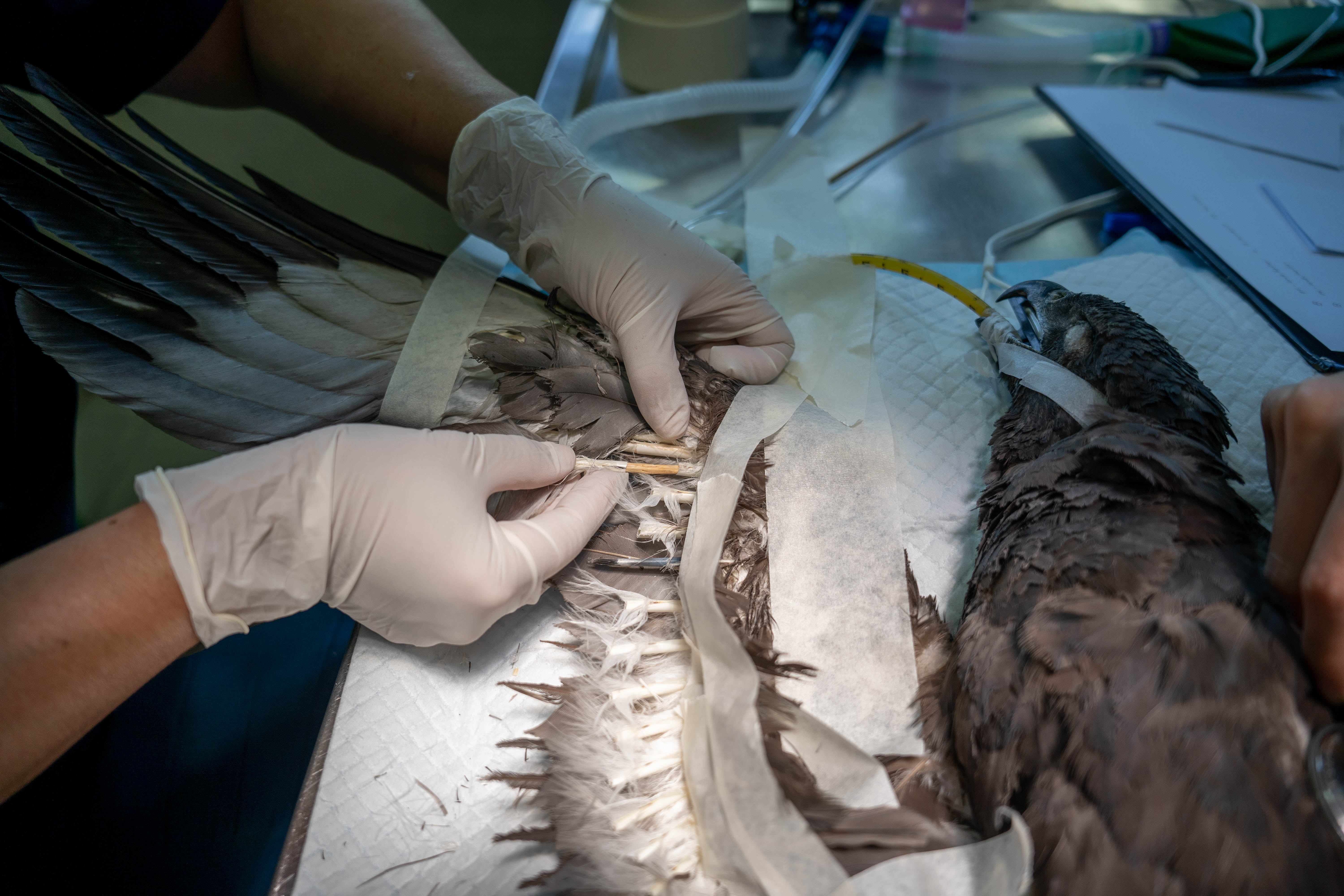 Image by Jurong Bird Park.
Image by Jurong Bird Park.
The bird would eventually grow new feathers that would naturally push the imped feathers out when it moults.
Rasidi said that imping is similar to getting hair extensions for humans.
"However, unlike hair extensions, we have to be extra meticulous in ensuring that each replacement feather is carefully trimmed, measured and arranged in the right position to match the patient's original feather length and orientation as much as possible," she said.
Rasidi added that each feather is shaped differently, and fixing them at an incorrect angle can affect the aerodynamics of the bird's flight.
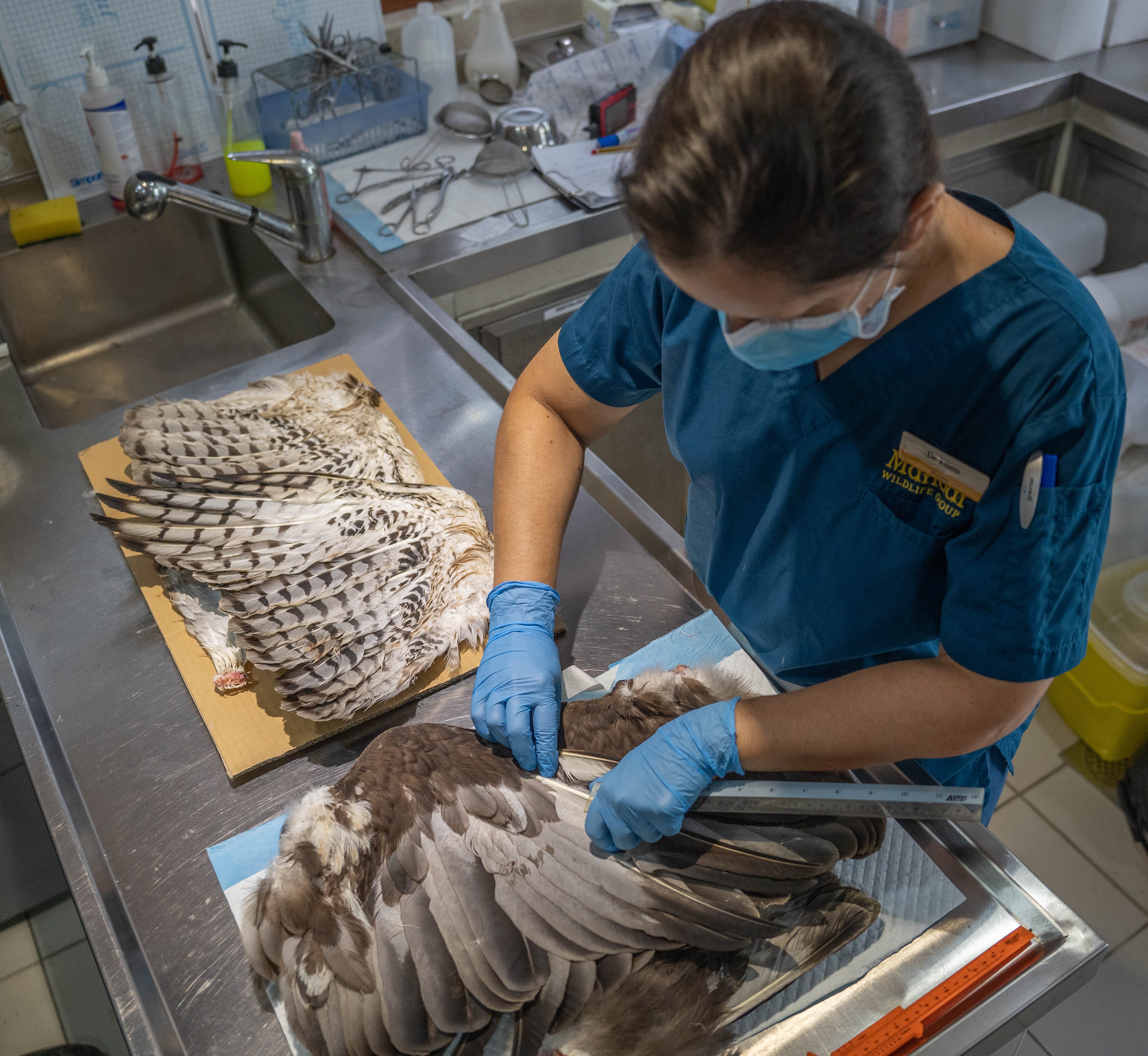 Rasidi measures the feathers of the donor birds to assess if they would be suitable for the patient. Image by Jurong Bird Park.
Rasidi measures the feathers of the donor birds to assess if they would be suitable for the patient. Image by Jurong Bird Park.
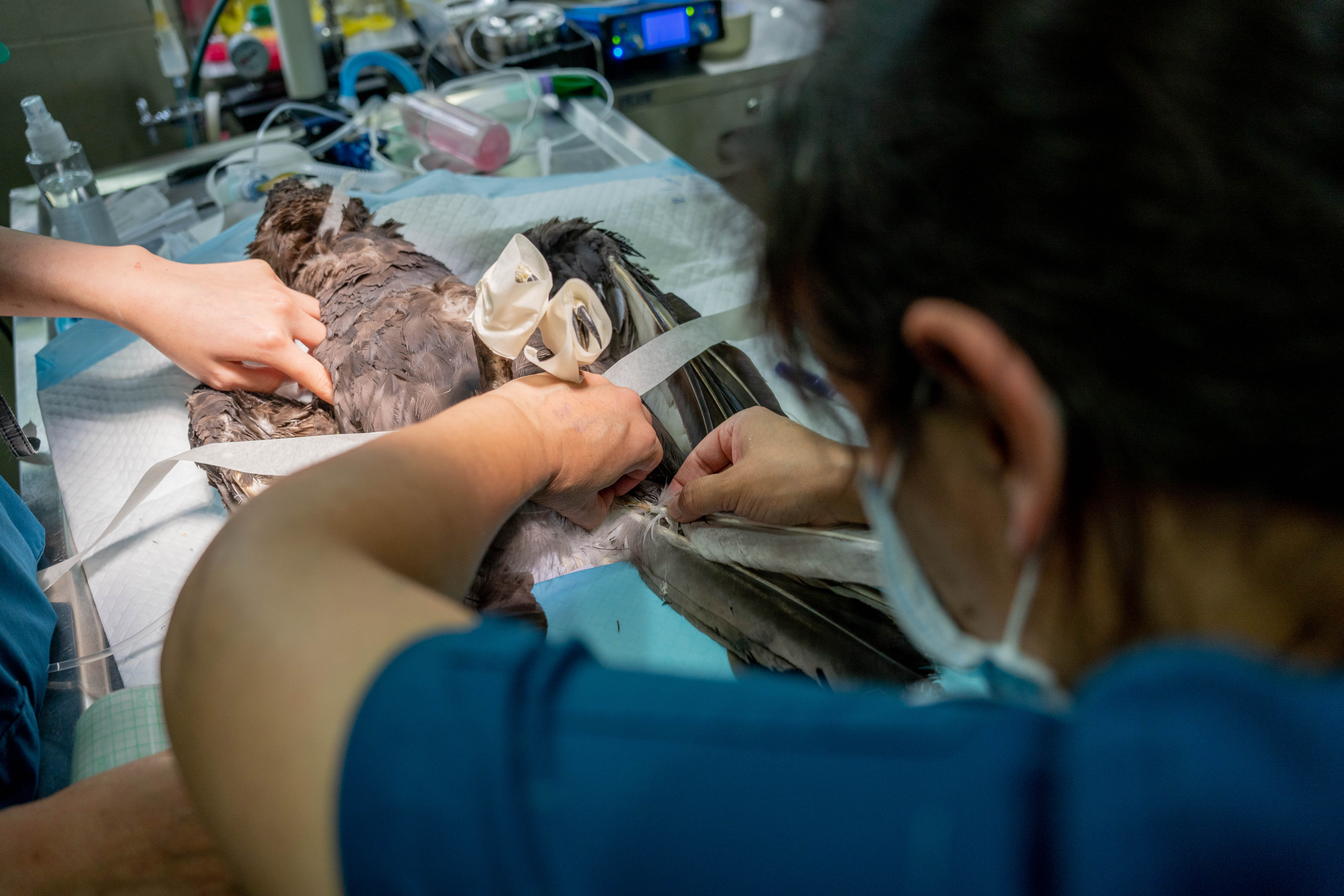 Image by Jurong Bird Park.
Image by Jurong Bird Park.
The process is painless for the bird as feathers are made of keratin, the same material as human hair and nails.
A new look for the eagle
Changeable hawk-eagles are termed "changeable" because the species is known to come in two colour forms -- a pale and dark morph.
Jurong Bird Park received two sets of donor wings from two rescued changeable hawk-eagle specimens that succumbed to severe injuries or diseases: one from a dark morph and one from a pale morph.
Most of the feathers from the dark morph were used to match the patient, while a few feathers of the pale morph were used for the left-wing.
While the patient might look a little different after the procedure, it will not affect its ability to fly.
More than 50 feathers replaced
In total, the vets painstakingly replaced more than 50 feathers on the bird's wings and tails with this method.
Here is a before and after of the eagle's feathers:
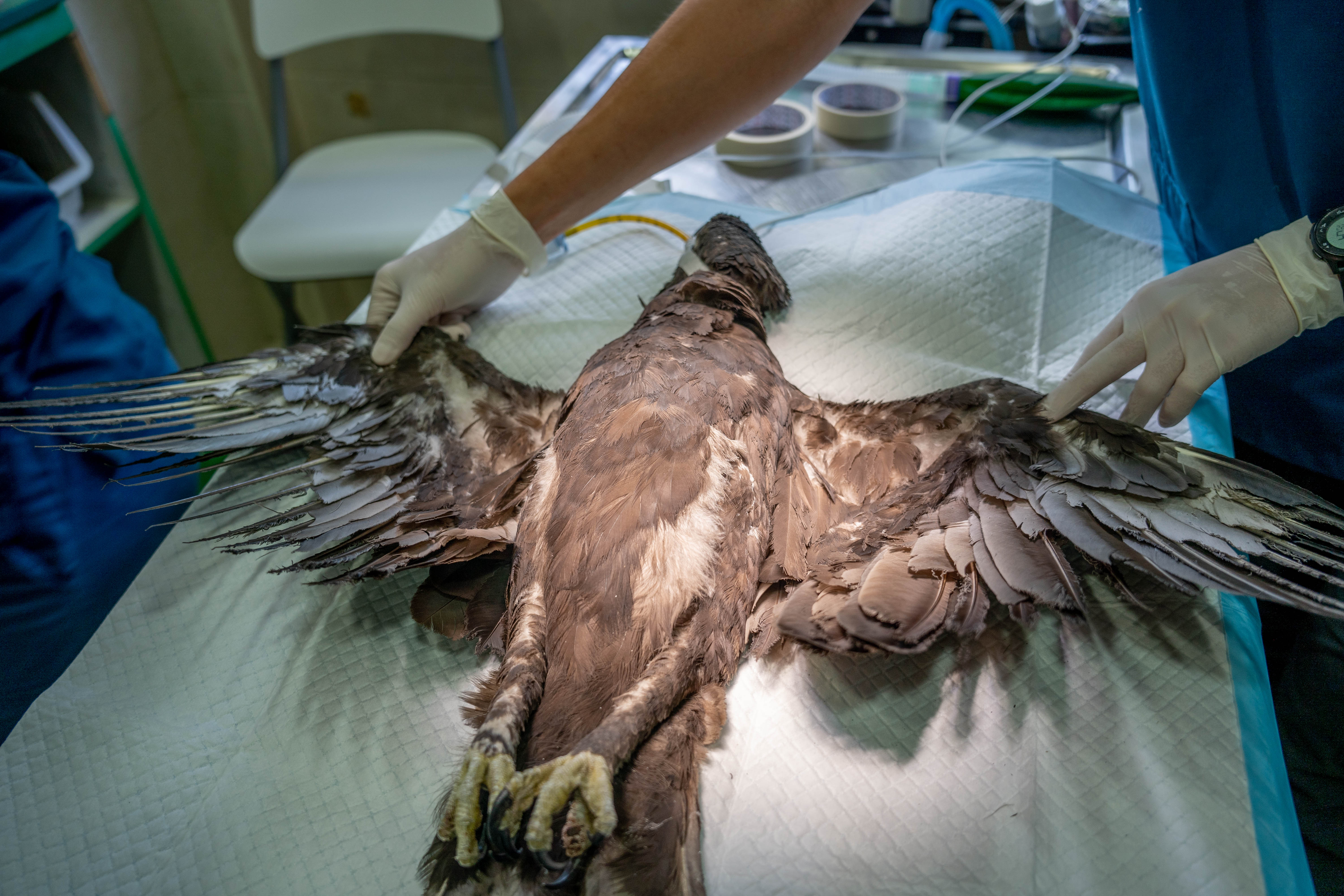 Before imping. Image by Jurong Bird Park.
Before imping. Image by Jurong Bird Park.
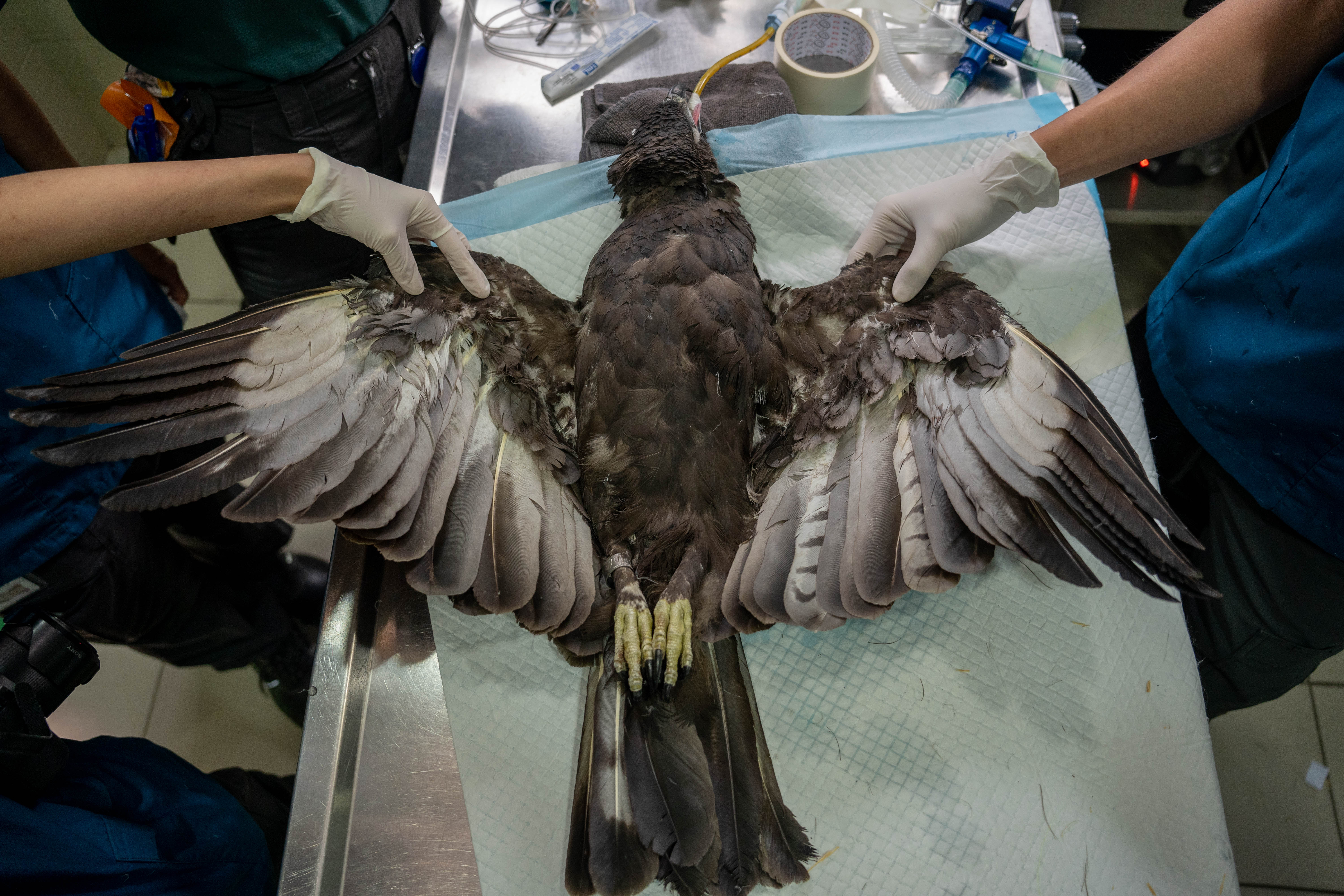 After imping. Image by Jurong Bird Park.
After imping. Image by Jurong Bird Park.
After the entire procedure, the bird was held by senior veterinary nurse Marcus Tan as it recovered from anaesthesia. Veterinary nurse Keiko Watanabe helped to keep the bird warm with hot air from a hairdryer.
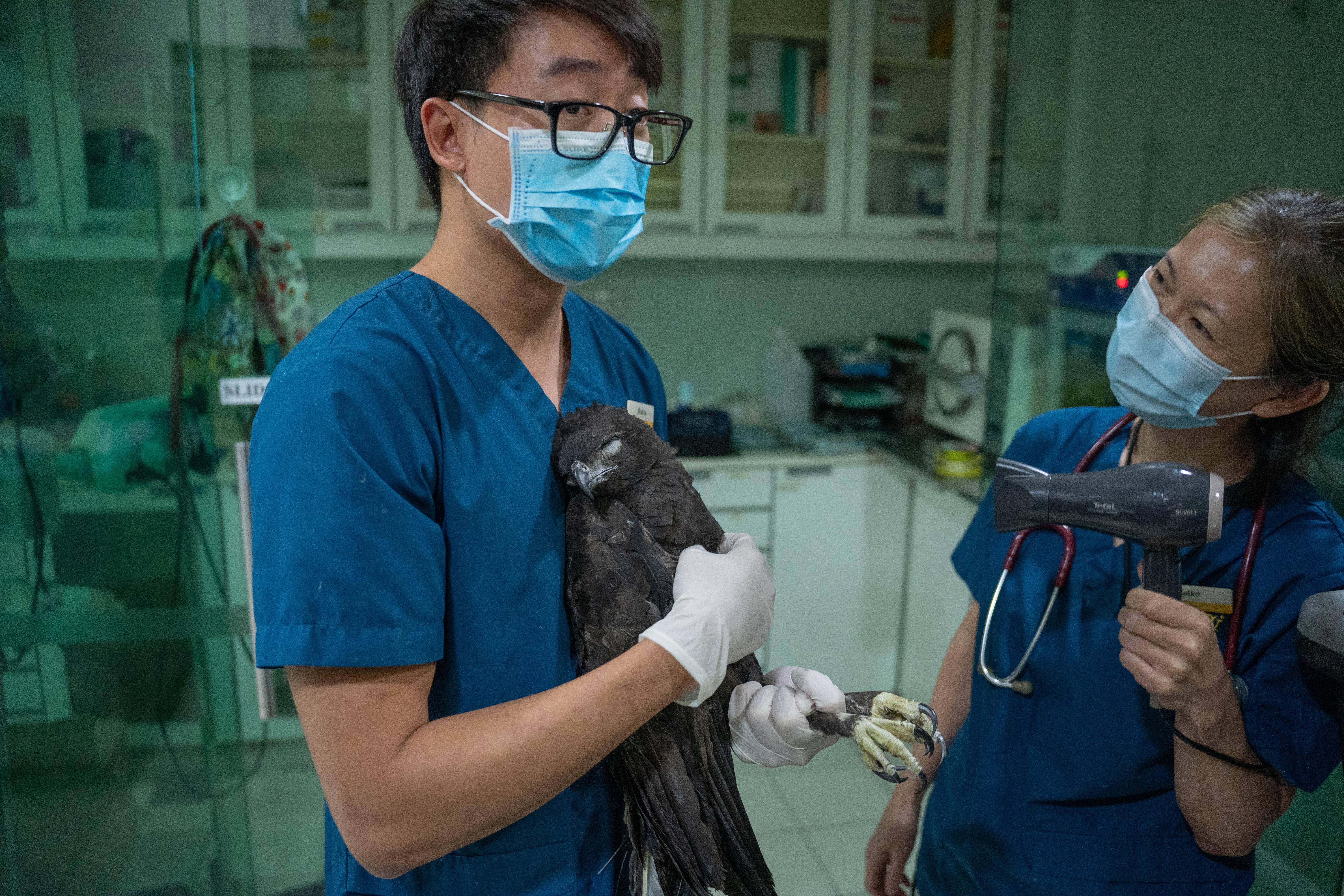 Image by Jurong Bird Park.
Image by Jurong Bird Park.
Released successfully
The bird was placed in a carrier to rest overnight and get used to its new feathers, before being released the next day on Jan. 21.
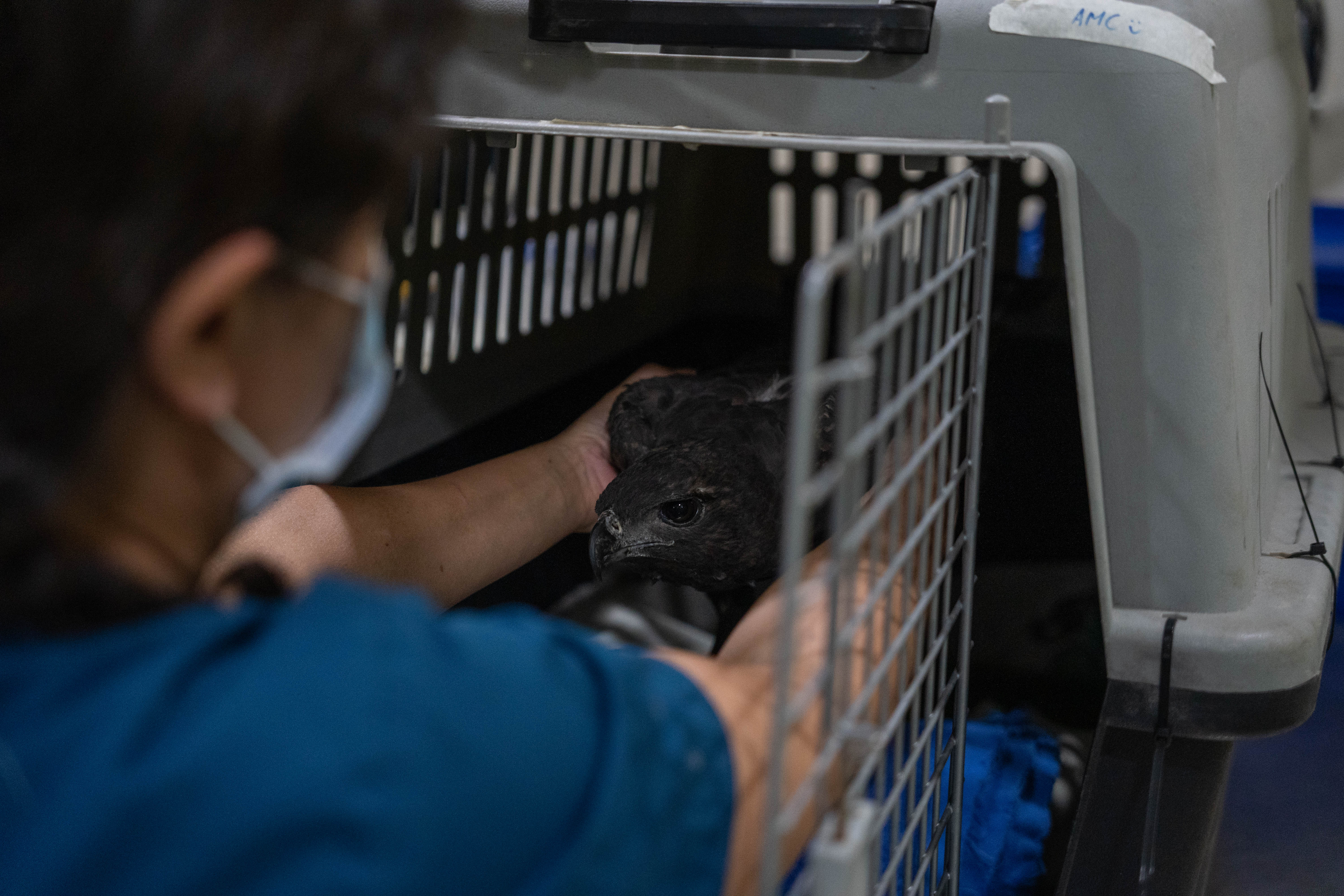 Image by Jurong Bird Park.
Image by Jurong Bird Park.
The bird adapted to its new feathers well and took off into the wild when the carrier was opened.
A real-time satellite tracking device provided by NParks was also attached to its tail so the bird can be tracked and monitored.
Since its release, Jurong Bird Park said that the hawk-eagle has flown about 10km from its release site.
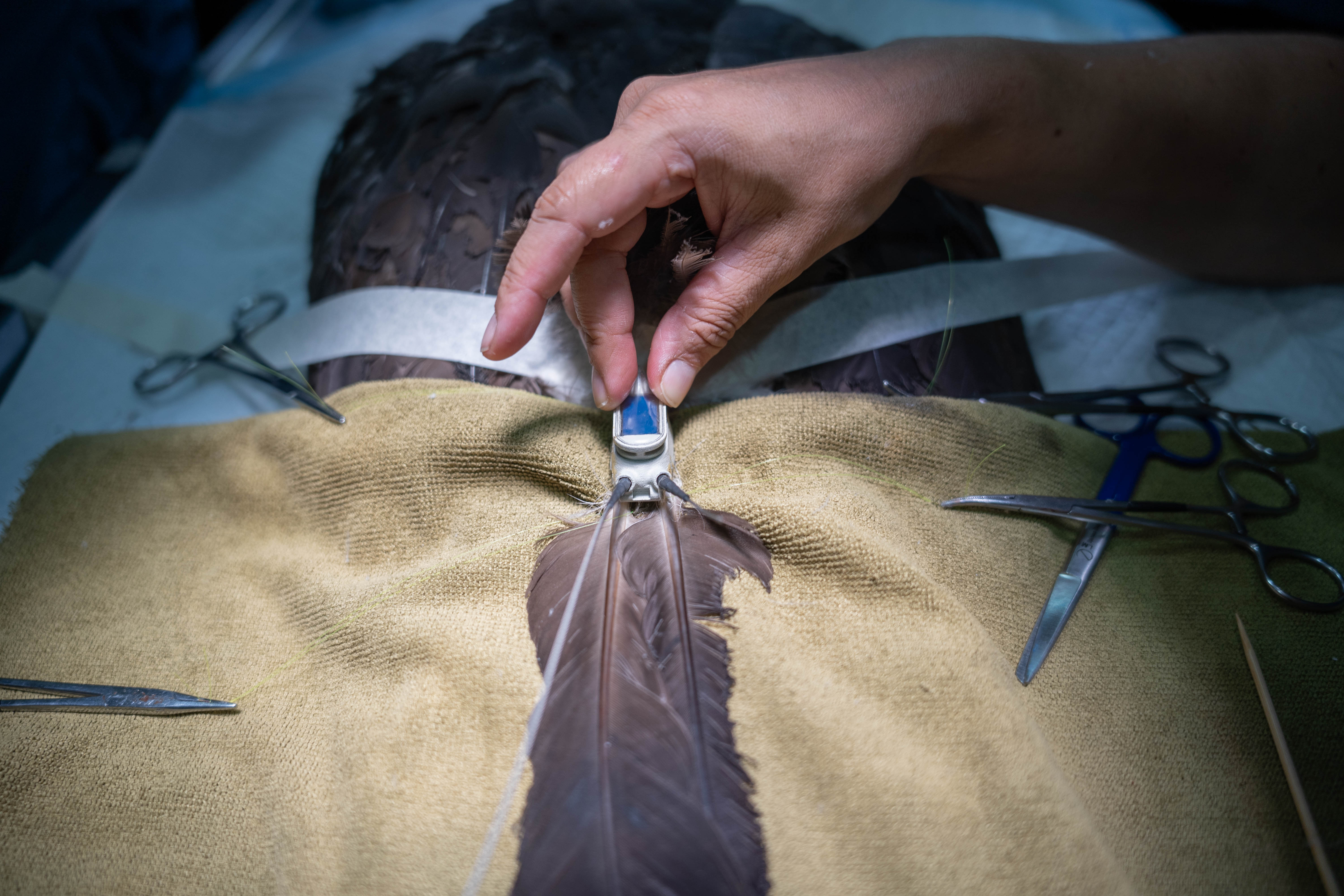 Attaching the tracking device. Image by Jurong Bird Park.
Attaching the tracking device. Image by Jurong Bird Park.
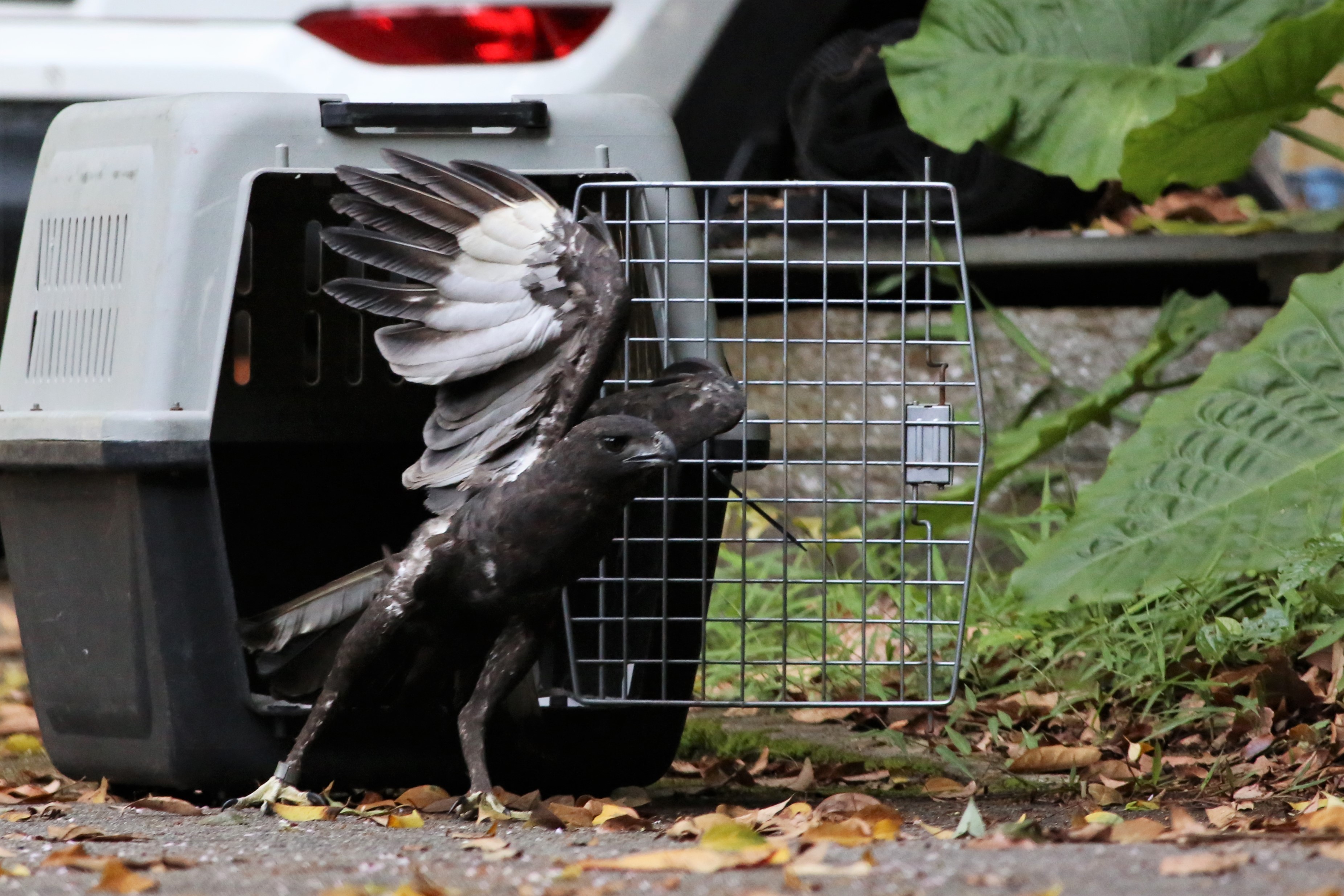 Image by National Parks Board.
Image by National Parks Board.
Top images by Jurong Bird Park.
If you like what you read, follow us on Facebook, Instagram, Twitter and Telegram to get the latest updates.
